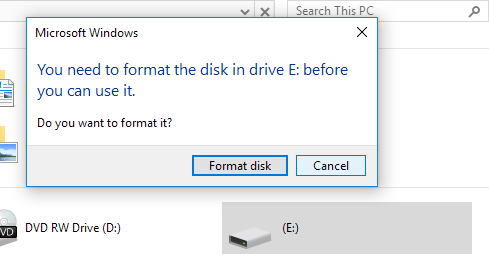
There are a few third-party products that allow Mac OS X to read NTFS formatted drives but as far as I'm aware the free ones aren't as well maintained as the commercial ones. Mac OS X has had support for reading NTFS formatted disk for a few versions, but still doesn't have write support. The default GUID partitioning scheme won't be recognised by 32-bit Windows XP and earlier Windows operating systems and Mac OS X versions earlier than 10.4.

Each volume within an APFS container can have its own APFS format - APFS, APFS (Encrypted), APFS (Case-sensitive) or APFS (Case-sensitive, Encrypted).FAT32 (called MS-DOS (FAT) by Disk Utility a filesystem originally released in 1977 and updated a few times since, lastly in 1996) really is the only cross platform filesystem that is going to work fully out of the box with Windows and Mac OS X.īe careful though, if you are using Disk Utility to format the drive, you should make sure to choose the Master Boot Record partitioning scheme (hit the "Options." button below the "Partition Layout" control on the Partition pane). You can easily add or delete volumes in APFS containers. For example, folders named “Homework” and “HOMEWORK” are two different folders. For example, folders named “Homework” and “HOMEWORK” are two different folders.ĪPFS (Case-sensitive, Encrypted): Uses the APFS format, is case-sensitive to file and folder names and encrypts the volume. Choose this option if you don’t need an encrypted or case-sensitive format.ĪPFS (Encrypted): Uses the APFS format and encrypts the volume.ĪPFS (Case-sensitive): Uses the APFS format and is case-sensitive to file and folder names.

Each volume uses only part of the overall container, so the available space is the total size of the container, minus the size of all the volumes in the container.Ĭhoose one of the following APFS formats for Mac computers using macOS 10.13 or later.ĪPFS: Uses the APFS format. If desired, you can specify reserve and quota sizes for each volume. When a single APFS container has multiple volumes, the container’s free space is shared and automatically allocated to any of the individual volumes as needed. macOS 10.13 or later supports APFS for both bootable and data volumes.ĪPFS allocates disk space within a container (partition) on demand. While APFS is optimised for the Flash/SSD storage used in recent Mac computers, it can also be used with older systems with traditional hard disk drives (HDD) and external, direct-attached storage. Apple File System (APFS), the default file system for Mac computers using macOS 10.13 or later, features strong encryption, space sharing, snapshots, fast directory sizing and improved file system fundamentals.


 0 kommentar(er)
0 kommentar(er)
